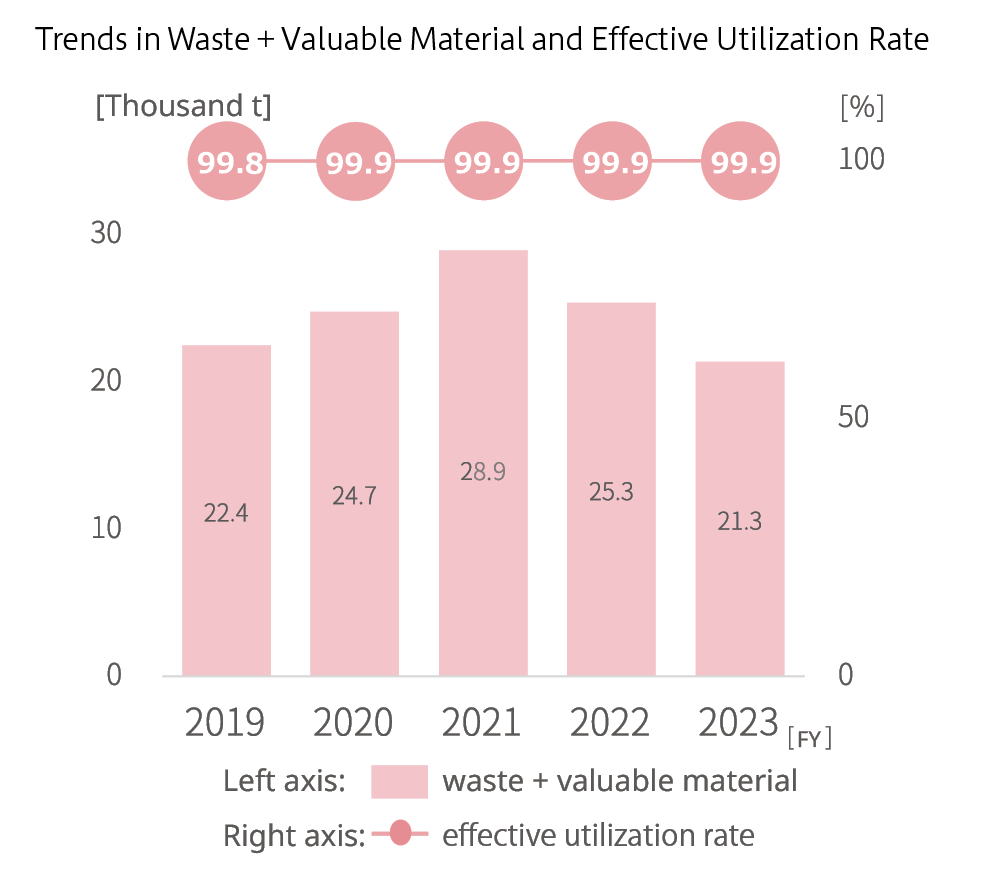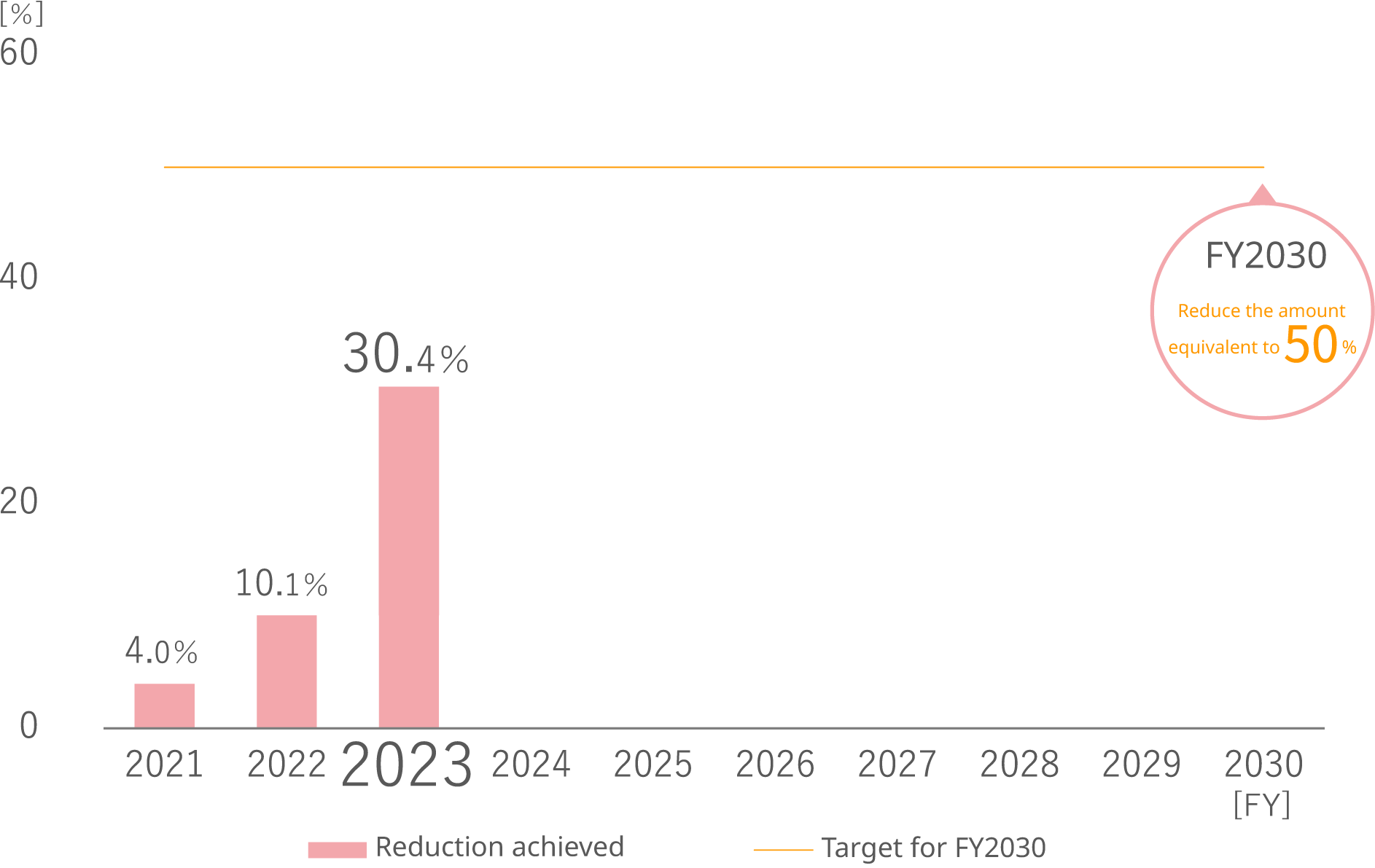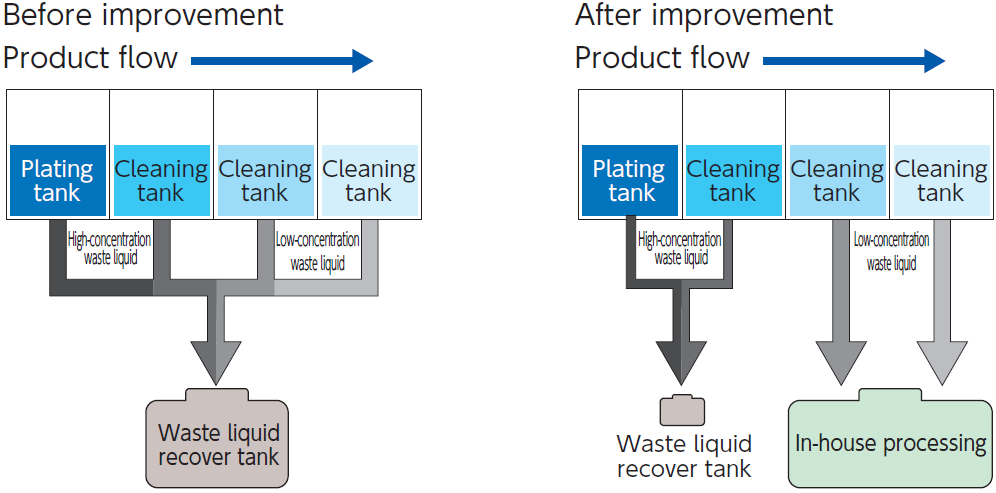
SHINKO ELECTRIC INDUSTRIES CO., LTD.

SHINKO ELECTRIC INDUSTRIES CO., LTD.
 Waste Reduction
Waste ReductionThe Shinko Group regards waste as a valuable resource and continues to work to recover and use it as an energy source.
We are actively promoting waste reduction and recycling in accordance with the Basic Act on Establishing a Sound Material-Cycle Society, which stipulates (1) reduction of waste generation, (2) reuse, (3) recycling, and (4) heat recovery.
Reporting boundary: Shinko Group in Japan
The Shinko Group in Japan achieved zero emissions in FY2003 by effectively utilizing wastes and reducing landfill disposal and simple incineration (disposal methods not making effective use of waste heat from incineration or residual materials after incineration) to zero in order to create a recycling-oriented society. Since then, the effective utilization rate for waste has remained close to 100%, and we continue to maintain zero emissions.
Note: The effective utilization rate will not reach 100% since waste for which there is no effective utilization method and waste brought to local government-operated disposal sites that do not practice effective utilization (general waste from business activities) is not subject to zero emissions calculations.

In accordance with the Act on Waste Management and Public Cleaning, we outsource disposal properly to industrial waste disposal contractors and confirm proper disposal once a year through on-site inspections, etc. No improper disposal was found at the contractors in FY2023. We also properly dispose of equipment containing PCBs possessed by the Shinko Group in Japan in accordance with the Act on Special Measures concerning Promotion of Proper Treatment of PCB Wastes.
Since FY2023, we have divided our activities into two divisions, the manufacturing division and the facility management division, and clarified the targets of each division's activities. The manufacturing division mainly promoted the conversion of solid waste into valuable resources through thorough sorting, while the facility management division reduced waste by processing liquid waste from production in-house. As a result, we reduced waste by 1,218 tons, equivalent to 20.3% of the amount of waste generated in FY2020, the base year for the medium- to long-term environmental targets.
As a result, we were able to reduce waste by the equivalent of 30.4% over the three-year cumulative total since FY2021, in line with our medium- to long-term environmental target (FY2030) which is to reduce the amount equivalent to 50% of the base year.
Medium- to Long-term Environmental Targets Cumulative Waste Reduction Results

1 Amount per unit of sales: Amount of waste per 100 million yen of sales
1. Promotion of the conversion of waste into valuable materials through thorough sorting
2. In-house processing of waste liquids
3. Extending the period of use of cleaning liquid, plating solutions, and recycling waste liquids
4. Promotion of regeneration and reuse
5. Cutting weight by reducing moisture content
6. Reduction of debris and waste through process improvement
Waste liquids that are not treated in-house are discharged as waste, and we are analyzing our processes and studying and implementing measures to treat the waste liquids in-house to the greatest extent possible.
In order to treat the wastewater in-house, the concentration of the wastewater must be low. In the process where the measures were taken this time, however, all wastewater of different concentrations were recovered to the same tank, which increased the concentration of the recovered wastewater.
Therefore, we separated the low-concentration liquid waste that could be treated in-house from the high-concentration liquid waste and recovered it through piping, thereby realizing in-house treatment of approximately 90% of the liquid waste.
As a result, we were able to reduce waste by 838 tons (in FY2023).

Plastic is a widely used material because of its usefulness, but it is also cited as a factor in various problems such as marine plastic pollution, climate change, and waste. In response to this global situation, Japan enacted the "Plastic Resource Circulation Act" in June 2021. As a major emitter as defined in this Law, we have newly established the "Promote measures to reduce amount of plastic materials used and amount of waste plastic" as part of the Environmental Action Program (Stage 11) in order to contribute to the resolution of issues related to plastics, and we are promoting this initiative.
Activities in FY2023
We will continue our efforts to reduce the amount of plastic materials used and waste plastic.
Shinko Technoserve Co., Ltd. ("STS"), a Group company, is responsible for sorting waste plastic to convert it into valuable resources (recycling). In order to do so, a large number of manhours are required to remove foreign substances such as labels and to sort the waste plastic. In addition, waste plastics that are too small to be converted into valuable resources on a plant-by-plant basis are collected from each plant and sorted into a large quantity to be converted into valuable resources. Although this is a time-consuming process, it contributes to the reduction of waste and the recycling of plastics.
Label removal by STS
The core that remains after the film material is used is a valuable material that can be recovered, but because the film remains on the core, it has been treated as waste. It is necessary to separate the core from the film for making the core valuable, however, manual sorting was inefficient and difficult because a portion of the film would fly off in small pieces, then adhere to the surroundings and workers due to static electricity.
STS therefore manufactured a device for separating cores and film using waste materials. This equipment facilitated the separation of cores and films, and achieved the following significant results.
We will continue to improve the equipment for more efficient sorting.
・Reduction of waste plastic and conversion of plastic materials into raw materials: 26 tons
・Cost reduction: 3,191 thousand yen/year
Separator for core and film